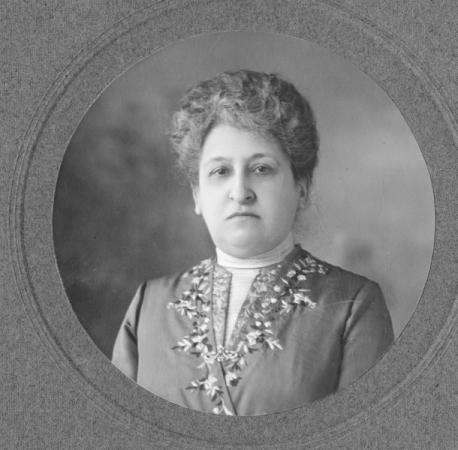This Spring, on April 28, the Peace Palace will participate in the commemoration of the 100th anniversary of the International Congress of Women that took place in the city of The Hague in 1915. The women who attended this Congress a century ago, were suffragists who up until that time, met every other year through their national organization at the International Women Suffrage Alliance. Due to the outbreak of World War I, their 1915 meeting could not take place in Berlin. Despite of the war, the idea of solidarity among the women from different countries did remain intact. A small delegation headed by Dutch suffragist and physician Dr. Aletta Jacobs, believed it to be important to organize a meeting, even during wartime, to discuss the principles of constructive peace.
Aletta Jacobs took responsibility for organizing the event which was to take place in The Netherlands because of its neutral position during World War I.
Invitations to participate in the Congress were sent to women’s organizations as well as individual women all over the world. Approximately, 1500 women, from neutral and warring countries, attended the Congress. Many more intended to come but were unable to because they were prevented from leaving their country by their own national governments or they were denied passports and some could simply not make the journey to The Hague because national borders were closed due to the war. The North Sea was closed off as well which prevented the women’s delegation from Great-Britain to cross over. Fortunately, three British ladies did manage to attend the Congress.
The women who did make it to The Hague came from 12 different nations namely: Sweden, Norway, Germany, Hungary, Italy, Belgium, Austria, Canada, the United States of America, Denmark, Great Britain and the Netherlands.
Public opinion from various countries was strongly opposed to the International Women’s Congress of 1915. The women were overall not taken seriously by governmental leaders and often subjected to much ridicule. [1] .
Aletta Jacobs addressed the delegates during the opening session and spoke of the aim of the Congress. She stated: “Those of us who have convened this Congress of Women assembled to protest against war and to suggest steps which may lead to warfare becoming an impossibility”. [2]
During the four day congress, a series of evening meetings were held where delegates took the chair and addressed the audience. On the second evening, a public meeting was held and according to the report of the Congress, there was not an empty seat left in the hall where the sessions took place.
At the end of the Congress, a set of resolutions were adopted at the business sessions with regards to seven different subjects. These were: women and war, actions towards peace, principles of a permanent peace, international cooperation, the education of children, women and the peace settlement conference and lastly a resolution stating the actions to be taken after the congress.
The Congress was truly unique in its day because up until that time, international conferences were only meant for men to take part in as women had no active role to play in public life. Considering the circumstances of their time, the women who attended this Congress, were very courageous to publicly engage in political activities that were not supported by their national governments. In addition, it was also very unusual for women to travel on their own, especially during war time which meant they willingly put themselves in physical danger to make the journey to The Hague. Two women, American suffragist Jane Addams , who presided over the Congress and American professor Emily Greene Balch, the vice chair, later won the Nobel Peace Prize.
Out of the International Congress of Women, another organization developed, namely Women’s International League for Peace and Freedom (WILPF) which still operates to this day. Jane Addams served as its first president. This year, on April 28th, WILPF will celebrate its centenary in the city of The Hague.
Special lectures and seminars are planned to take place in the Peace Palace to celebrate this occasion. In the weeks leading up to the WILPF centenary, we will post items on some of the remarkable women who made the 1915 Congress happen, the different delegations and of course details on the activities that will take place in the Peace Palace to celebrate this historical event.
Footnotes
[1] 'Feminism, pacifism, internationalism and the 1915 international congress of women' by L.B. Costin in Women's Studies Int. Forum, Volume 5 (3/4), 1982, p. 310.
[2] Report of the International Congress of Women, The Hague, 1915, pp. 5-6
